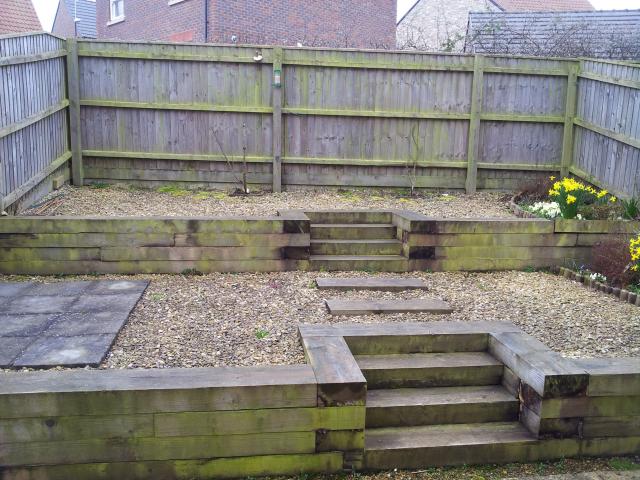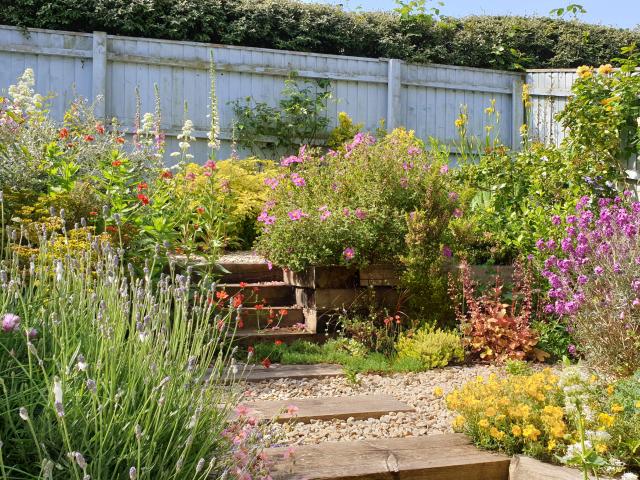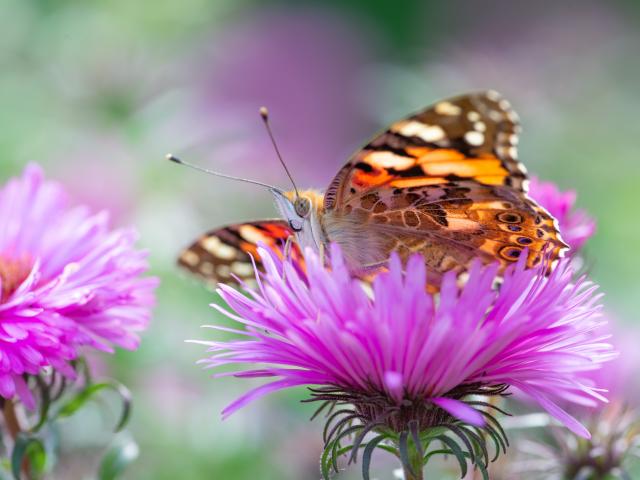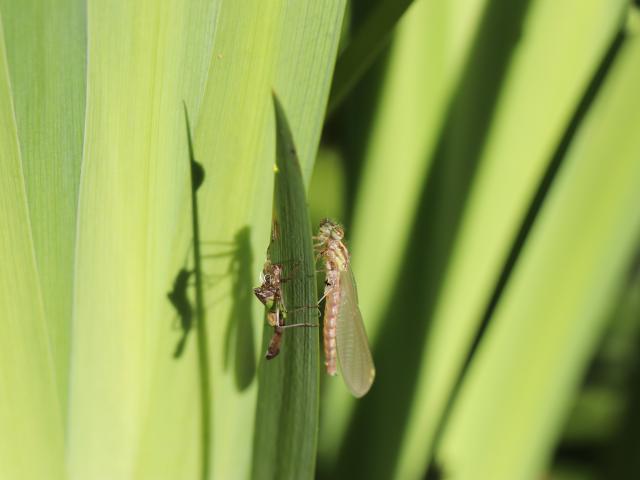It is such a delight to be in the garden this month – so many plants have burst into bloom that there is a mass of colour and a buzz of pollinators. The Springwatch programmes have also brought brightness to BBC2 and they have launched a big citizen science project called Gardenwatch to encourage people to assess their garden wildlife. It has inspired me to review my own space.

When I moved into my current house in 2014 the small back garden was pretty barren of plants and wildlife. It is only 6.4 metres wide and 6.8m deep and consists of two levels, each about 2.4m wide, with a 2m-wide terrace next to the house. The area is fenced and the soil banks are held back with wooden sleepers. The majority of the ground had gravel laid over membrane.
Luckily the space is south-facing, so a lovely sun trap for a large proportion of the day and perfect for growing masses of plants for pollinators. However, there were only a few living things including some roses, a clematis, primroses and later daffodils. I excitedly set about planning a makeover and the main consideration was to provide nectar for a large proportion of the year by having a spread of flowering times. Evergreen shrubs and plants were added to maintain the feeling of a green haven all year round and to provide shelter for wildlife.

I painted the fence then set to work creating many flowerbeds by scraping back the gravel, cutting off some of the membrane and topping up with soil. I was impatient for colour, so while this was in progress I added plants in pots – some annuals and some perennials that would later go in the ground.
I wanted to look out of the window at a sea of vibrant colour and texture, like an Impressionist painting, and tried to balance and repeat hues across the space such as red Geum, orange Calendula, yellow Common Rock-rose, green Euphorbia, blue Hardy Geranium, purple Lavender, pink Verbena bonariensis or Perennial Wallflower ‘Bowles Mauve’ and White Valerian. The floral display has attracted a decent selection of butterflies to feed - Painted Lady, Red Admiral, Peacock, Common Blue and skippers along with Green-veined, Large and Small Whites. Dayflying moths include Six-spot Burnet, Mint Moth and Cinnabar.

Bees feast on many plants but seem to adore the yellow-centred, magenta-pink, open flowers of the Curled-leaved Rock-rose Cistus crispus – a small, evergreen, drought-resistant shrub. However, danger lurks, with white Crab Spiders waiting to pounce on them.
A tree was definitely needed to give the birds a perch and I chose a Crab Apple Malus brevipes ‘Wedding Bouquet’ that would provide beautiful blossom in May. Being deciduous it would let in maximum light in the winter. I do have a bird table, but so far mainly entertain a cheerful flock of Sparrows and other garden regulars including Robins, Blackbirds and Starlings. My favourites have to be the House Martins that last month returned to the same nesting spot, above a window, which they have used for several years in a row. Their melodious twittering is a delightful, chatty sound.
In 2017 I added a very small pond in the form of a plastic box sunk into the ground, with a basket on a ledge containing Yellow Flag and Marsh Marigold, which I realise will eventually become a bit too large for the space but provide sunshine-yellow flowers in spring. The other day I watched, entranced, as a damselfly emerged from its larval case on one of the Yellow Flag leaves.

Two frogs and a toad have, over time, put in appearances. There is plenty of food for them – having noticed many munched flowers and leaves, I undertook an early morning patrol, after rain, looking for slugs and snails that turned up 36 individuals of various different types. I have to admit they were rehomed in the countryside, away from my garden but I still have plenty more left! A hedgehog has visited in the past, but I haven’t seen it recently – I hope it comes back foraging.
I don’t have a front garden but do have extra space just outside the back gate, which should be for parking but is inconveniently on a steep slope. It has instead been repurposed as a spot for more pots – especially containing foodplants for moths, such as Mint and Wild Marjoram for the Mint Moth and Contorted Willow for the Puss Moth.
It has been fascinating seeing how much wildlife will arrive when you provide food, water and shelter. Gardens are constantly evolving and mine definitely still has room for improvement. Why not do an audit of your garden and see if there is a way to make it even more wildlife friendly over time?
Happy Gardening!
The Secret Gardener


